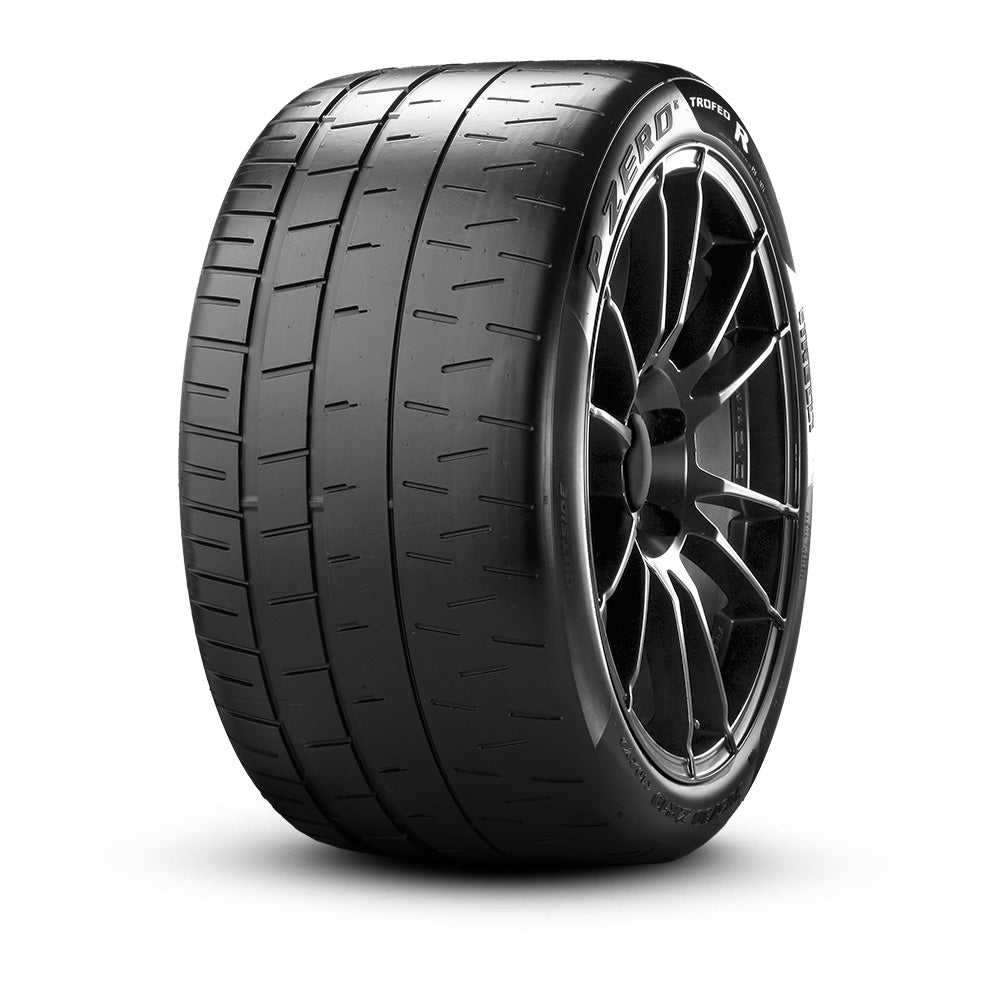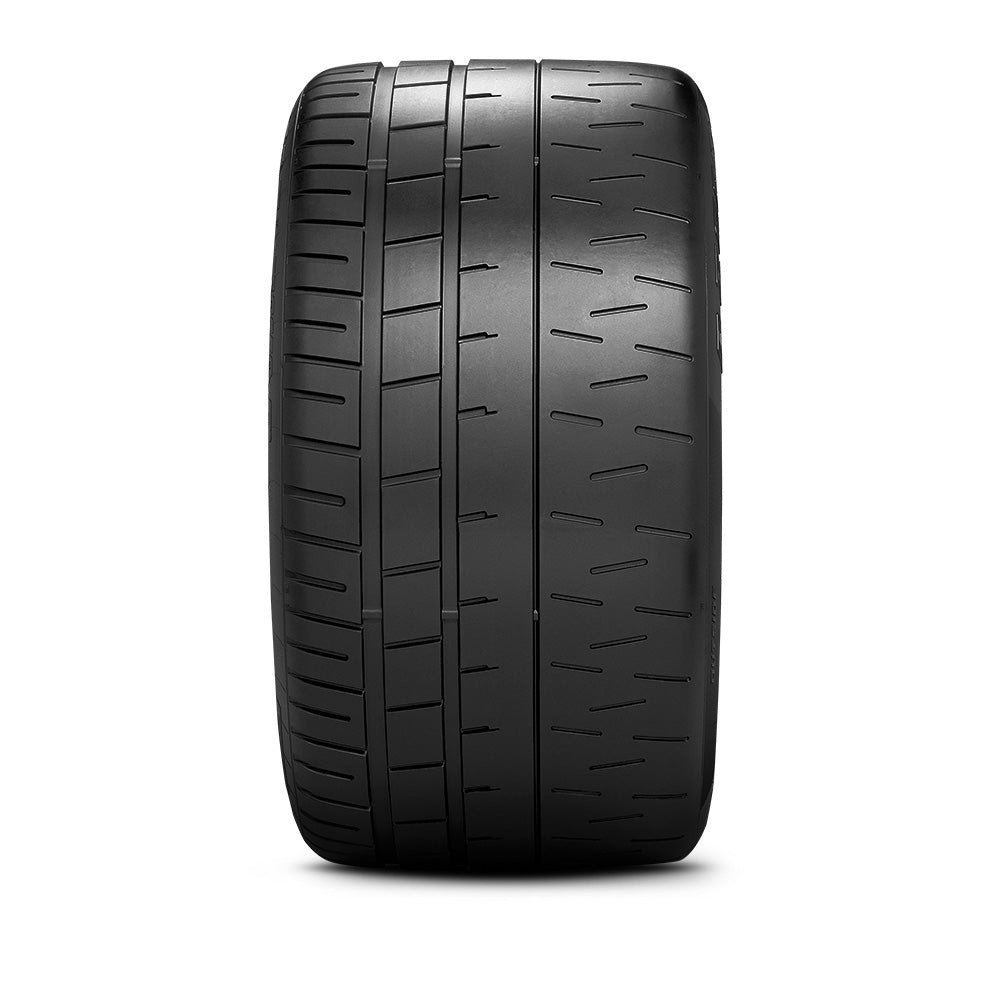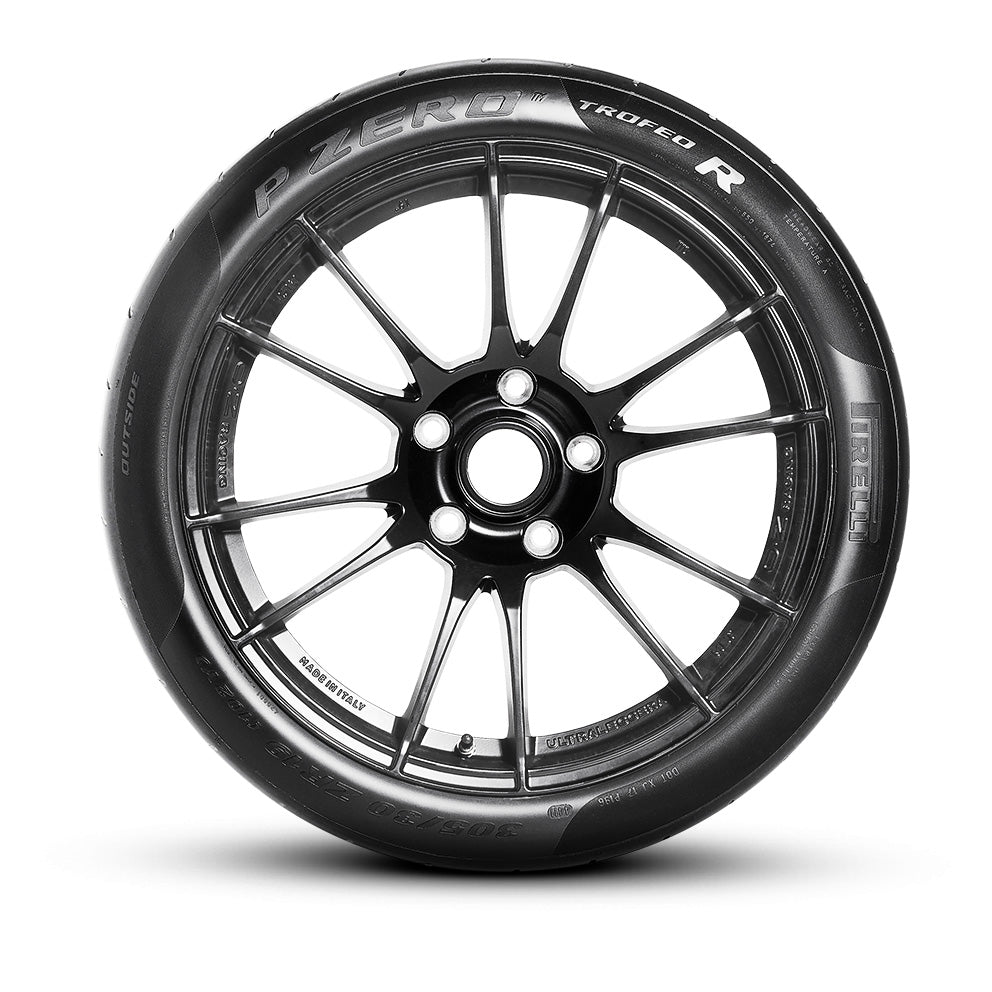P Zero™ Trofeo R has a stiff construction thus it does not necessarily need extra pressure to deliver performance. In fact they are designed to run at pressures around 2.2 bar (when hot), although the exact optimal pressure depends on the vehicle type.
The operating pressure reached when the tyre is fully warmed at working temperature, is critical for understanding the vehicle set-up.
Note that the pressure difference between “hot” and “cold” can be significant, typically around 0.5 bar.
Set the tyre pressures when cold to approximately 0.4 bar (6lbs/sq.ins) less than the required operating pressure. Drive the car on the circuit for 3-4 laps to bring the tyres up to temperature, re-enter the pit-lane and immediately re-set the pressures to the required operating pressure. Continue to check the ‘hot’ pressures throughout the use on the circuit if possible. Pirelli recommends the use of normal
compressed air (preferably dry) to inflate the tyre, providing that the above procedures are followed. Specialist gases such as nitrogen are not required unless the air source is excessively humid. Always use a high-quality air pressure gauge for consistent results. The use of metal rather than rubber valve stems is recommended as these are more resistant to high temperatures.
Before leaving the circuit and after the tyres have cooled down, DO NOT FORGET TO RE-SET TYRE PRESSURES TO THE STANDARD INFLATION PRESSURES AS RECOMMENDED BY THE VEHICLE MANUFACTURER.
Before taking your car out on a circuit it is important to take professional advice regarding car preparation and the installation of specialised safety equipment.
For example, it is essential for circuit driving to install a full harness multipoint safety belt with quick release fittings. This equipment will hold the driver firmly in the seat (which itself must be checked for secure mounting): an essential feature in the event of an accident but also highly desirable during hard cornering and braking. The effectiveness of the seat harness can be further enhanced by the use of a racing seat, giving added lateral support to hold the driver in place during hard cornering. Installation of a roll bar is also advisable. Other equipment such as a roll cage and fire extinguishers, etc may be considered necessary depending on the activity involved.
Once again, take professional advice as to what is required.



